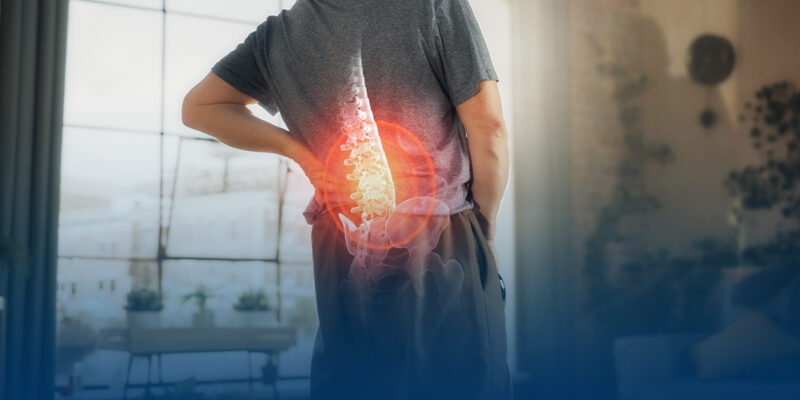

Kyphosis is a condition affecting the cervical and thoracic region, making the spine curve outward more than normal. Its official name is hyperkyphosis, and it is characterized by abnormal curvature of the spine, often exceeding 50 degrees.
Kyphosis can affect anyone from infants to older adults. If you or a loved one is showing symptoms of kyphosis, consult this guide and a physician.
The natural spinal curve ranges from 20 to 40 degrees for the upper spine and 40 to 60 degrees for the lower spine. Kyphosis occurs when the upper spine’s curvature exceeds the natural. While this is not dangerous to your health in most cases, it can affect your posture.
The main symptoms of kyphosis include:
In more severe cases, you might experience:
The causes of kyphosis vary but could include persistent poor posture, injuries and structural abnormalities of the spinal vertebrae. Age may also be a contributing factor in developing kyphosis — approximately 20%-40% of people 60 and older have kyphosis that exceeds 40 degrees.
There are different types of kyphosis, but the most common include:
While there are many different spinal conditions, one that often gets mistaken for kyphosis is lordosis. With lordosis, the spine curves toward the front of the body at the lower back or neck — also called the lumbar and cervical areas. While the spine naturally curves in these areas, lordosis presents with an abnormal degree of curvature.
Scoliosis is another common spinal condition that results in an abnormal curvature. However, rather than curving forward or back, scoliosis causes the spine to curve in an exaggerated S or C shape. Another key differentiator is that scoliosis is more often a result of genetic or developmental abnormalities of the spine, while kyphosis can result from age or injury.
If you’re experiencing symptoms, it’s a good idea to consult a spinal specialist for a diagnosis. Once you explain your symptoms to your physician, they will conduct a physical exam. They might have you perform a bend test — standing with your knees straight and feet together, you will slowly bend at the waist while looking down at your feet. This helps the physician identify obvious spinal issues.
A spinal X-ray or an MRI scan can also help a physician diagnose kyphosis. In general, spinal curvatures greater than 50 degrees qualify as kyphosis, but many different factors influence a diagnosis.
In the case of postural kyphosis, patients have seen success with lifestyle changes such as exercise, diet and maintaining good posture. However, treatment for kyphosis that results from factors like injury, age or developmental abnormalities is often more about managing symptoms and slowing progression.
Kyphosis is often complex, and treatment of this condition depends on individual factors. A few common options for managing kyphosis include:
Physical therapy helps people with kyphosis by enhancing strength and flexibility. Be sure to consult with your doctor if you’re beginning a new exercise routine. The following movements may help relieve symptoms of kyphosis:
Better sleep posture can also help you manage symptoms. The best pillow for kyphosis is one that allows the neck and spine to rest in alignment and support the back’s natural curves.
If you’re experiencing any kind of back pain or discomfort, consult the specialists at New York Spine Institute. As one of the largest spinal treatment centers in the tri-state area, we’re equipped to handle all kinds of spinal conditions, including the different types of kyphosis. Treating both kids and adults, we use innovative techniques and treatments to diagnose and address a wide range of spinal and orthopedic conditions.
Our spine specialists will work with you to create a treatment plan that takes your individual needs into account. You can schedule an appointment online or call us at 855-908-1480.